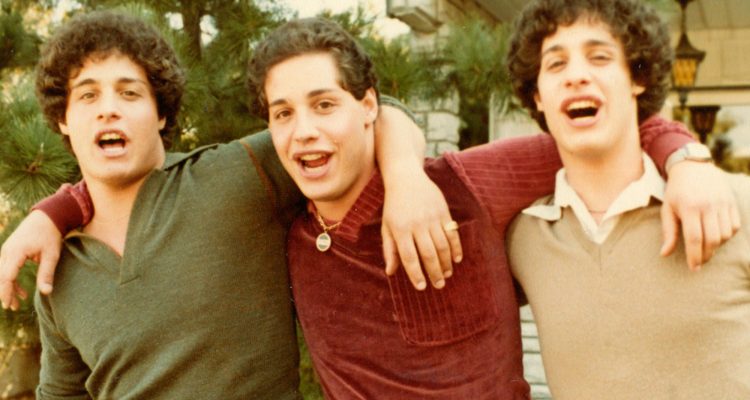Though this jaw-dropping documentary is rated PG-13, that classification doesn’t cover the audience’s reaction. With each of its successive revelations, “Three Identical Strangers” earns another “WTF?!” or “Holy shit!” from viewers, quickly blowing past the MPAA’s draconian limits on profanity in non-R-rated movies. Director Tim Wardle’s film is full of surprises, the least of which is its own dramatic shift in tone from wildly entertaining to absolutely disturbing.
With that in mind, it’s best to see “Three Identical Strangers” with as little knowledge as possible and let shock after shock carry you through to its conclusion. But for those who want at least a bare sketch, here you go: in 1980, three 19-year-olds who were adopted as infants into three separate homes discover that they’re actually identical triplets. They quickly become a media sensation, captivating TV audiences and newspaper readers with their compelling story of being separated at birth, but soon their lives – and Wardle’s film – take a darker turn.
From its first moments, this stranger-than-fiction documentary is immediately engrossing. It isn’t just its absolutely bonkers story; it’s the characters involved. The three brothers – Eddy Galland, David Kellman, and Robert Shafran – display varying degrees of immense charm, but they’re all on the spectrum of people you’d be drawn to if you overheard them telling their story in a bar. You’d be fascinated by their tale, but likely believe that they’d had a few too many. But what’s so riveting about “Three Identical Strangers” is the idea that it is true and what that actually means for the real-life people who experienced these unlikely events.
His subjects do a lot of the heavy lifting, but Wardle displays real talent in crafting a compelling narrative for his first major documentary. Perfectly paced editing unites contemporary interviews with the brothers and their families, archival footage from the triplets’ days of fame and well-crafted reenactments. “Three Identical Strangers” deserves special recognition for that last element in particular: these reenactments don’t feel cheap or like you’ve stumbled into a sub-par true crime show on cable. They’re almost as entertaining as moments with the triplets themselves, which are the film’s biggest assets. Wardle knows how to get a reaction out of the audience, whether it’s a laugh at the brothers’ sense of humor and delivery or a gasp at each layer of what happened to Eddy, David, and Robert.
Where “Three Identical Strangers” falls short is the questions it asks or eludes to, but doesn’t answer. Once it moves out of its mode of pure joy at the brothers discovering each other, it delves into what actually caused their separation. But the latter half of the film offers few real insights into what happened or even into the brothers’ current lives. More importantly, it also doesn’t address the reasoning for this largely shallow approach, whether it was privacy concerns from the families, lack of access elsewhere or disinterest in the answers.
Putting aside that need for clarity (and many viewers may be fine with what it presents), “Three Identical Strangers” is one of the most entertaining documentaries in years, sharing both a story and characters better than most scripted films. Wardle’s touch turns it into something more than just a viral moment or fodder for dinner party discussion, offering up real emotion that’s impossible not to get caught up in. [B+]

